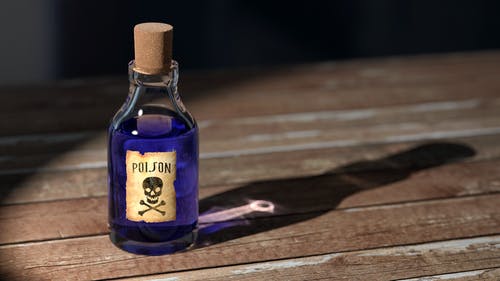Posted: Apr 17, 2019

When you sip a beer or sample wine, you could get more than a pleasant buzz—the drinks may contain low levels of heavy metals. These elements accumulate in the body and can cause medical problems, so health organizations worldwide have set or proposed standards for acceptable levels in some food and beverages. Researchers have now pinpointed a silty filtration material as the culprit behind traces of inorganic arsenic, cadmium and lead in beer and wine.
Brewers and vintners sometimes use a substance called diatomaceous earth (DE) in the final stages of filtration to produce a clear, shelf-stable product. Consisting of the fossilized remains of tiny aquatic organisms, the substance removes unwanted particles without affecting flavor. Previous experiments suggested that DE filtration leaches arsenic into fruit juice, but it was not known if the same held for alcoholic drinks.
Benjamin Redan, Lauren Jackson and their colleagues at the U.S. Food and Drug Administration tested the arsenic content of small batches of lab-made alcoholic beverages—including lager, ale, red wine and white wine—before and after they were filtered with three types of food-grade DE. The researchers found arsenic levels increased up to eightfold—in some cases, above the FDA’s proposed limit of 10 parts per billion for apple juice (the closest beverage for which the agency has issued standards). Noticeable levels of arsenic and other contaminants were also found in some commercially available wines. The findings were published in March in the Journal of Agricultural and Food Chemistry.
“The levels of heavy metals detected are not a risk for human health, except in the case of massive daily beer consumption, but the issue of heavy metal content in foodstuffs is fundamental,” says Stefano Buiatti of the University of Udine in Italy, who was not involved in the study.
The researchers found they could reduce arsenic in filtered products by adjusting the quantity of DE used or changing the filtration time, for example. The food industry already employs alternative purification methods. “Membrane-filtration technology for beer filtration is of great interest in the brewing community,” says Joseph Palausky, technical committee chair of the American Society of Brewing Chemists. “But there are other more traditional and established techniques—such as cold stabilization or maturation and centrifugation—that are in use in the industry.
By Rachel Berkowitz April 16, 2019 Source: Scientificamerican.com
Go-Wine's mission is to organize food and beverage information and make it universally accessible and beneficial. These are the benefits of sharing your article in Go-Wine.com